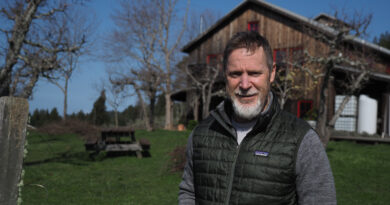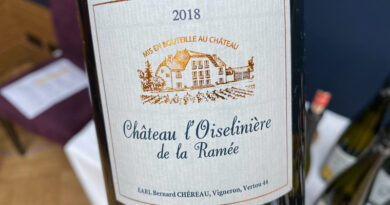Ortega, Britain’s great white hope or just another white elephant?
‘If there is one varietal that cannot be accused of a lack of flavour, it is the German vine crossing Ortega, but when it comes to this bodybuilding grape, less is most definitely more’,
English wine – far from a joke now
Jancis Robinson May 26, 2007.
A critic I know was almost cancelled for using the term ‘vine racism’ during a stateside live in defence of certain vine crossings and PIWIS. I see his point. To many drinkers, Germanic crossings and PIWIs are verboten.
Lisse Garnett asked winemakers Salvatore Leone, Adrian Pike and Jose Quintana to define their love for Ortega.



The drinker’s desire for organic, natural options should logically open minds to fungal-resistant engineered vines. Common sense draws conscientious consumers toward sustainability. Can an early-to-ripen, aromatic crossing like Ortega make the grade here in the UK?
Ortega ripens too early now for a warming German climate. I’ve heard it called a ‘bitch’ to grow too and even more hideous to harvest, nevertheless, an increasingly outspoken mob of English winemakers think it is the very best option we have for creating terroir expressive age-worthy white wine here in Britain.
Disease-resistant Germanic hybrids and crosses have been accused of many things, from being unnatural to Hitler’s spawn (many were created under Nazi tenure).
On June 12, 2016, The Ithaca Voice published food scientist Gilbert Stoewsand’s obit from the Cornwell Chronicle. It detailed Stoewsand’s 70s fight to rescue New York’s fledging wine industry from extraordinarily ‘shoddy science’ that attributed physiological deformities in animals to wine made from hybrid grapes. These rumours were published in The Washington Post; consequently, hybrid wines were withdrawn from shops.
Germanic crosses have suffered less conspiracy-level bigotry but appear to have the allure of halitosis to marketers. And yet there is an outlying group of radical evangelical Brit winemakers who speak of Ortega in hushed, deferential tones. For them, it might be the great white saviour.
For the purpose of this piece, I infiltrated their kind. We met in the wilds of countercultural Sussex as Bonfire season began and wicker effigies of Boris were being whittled amongst the oaks. We talked late into the night, supped extensively, and tasted the oldest existing vintages of English Ortega known to man. Their words follow.

THE ORIGIN OF ORTEGA
Ortega is supposedly named after the Spanish philosopher José Ortega y Gasset (1883-1955); forgive me, but this sounds like exactly the kind of wine guff that becomes ‘word’ courtesy of journos like me. Three years ago, I chased up a story that claimed wines served at the signing of the Magna Carta originated from New Hall Vineyard at Purleigh in Essex. Eventually, I tracked down the very historian from whom these rumours originated, who told me it was indeed complete guff.
For my Ortega research, I contacted the Bavarian State Institute for Viticulture, no response, so I contacted Wines of Germany, who were absolutely fantastic; they put me in touch with an expert viticulturist and old vine specialist named Josef Engelhart… He gave me the facts.
Ortega was indeed named after the Spanish philosopher by its creator Dr Hans Breider at the Bavarian State Institute for Viticulture and Horticulture in Würzburg in 1948 (Breed no. B48-21-4) and registered in 71. Parents: Müller-Thurgau (Riesling x Madeleine Royal) x Siegerrebe (Madeleine Angevine x Gewürztraminer). The variety is hairy, has a reddish shoot tip and a light green leaf. The grape lies between Müller-Thurgau and Siegerrebe; it’s yellow in colour and proffers round, thick, firm berries until shortly before they are fully ripe. Ortega ripens very early. It’s susceptible to wasps and weaker than Siegerrebe, so it requires wasp-repellent, but it can produce exceptionally high yields without compromising on quality.
Engelhart says Ortega is dying out in Bavaria; with the onset of global warming, the very traits it was created to produce, such as high sugar, low acidity, and early ripening, make it repellent today. His Ortega vines are ripe by the 20th of August. The fruit, wine and taste are good, but this variety needs far cooler climates than Germany unless you seek sweetness. Sweden, Norway, Canada and the UK are ideal, but botrytis and susceptibility to frost in Spring can be an issue. Most prefer to use Solaris, which also ripens early but requires less plant protection thanks to a touch of hybrid DNA.
Crosses are the result of crossing two Vitis vinifera varieties. Hybrids are interspecies crosses; both are created by chance but also by design. Resistance to rot and disease can be a huge advantage, for prior to even phylloxera came downy and powdery mildew, causing great harm to the vineyards of Europe. Hybrids are often resistant to fungus but still require grafting onto American rootstock.


HYBRID PIWIS
France’s AOC system remains nonplussed despite an EU ruling aimed at reducing spraying that allows hybrids to be used in PDOs. Hybrids were and are considered inferior, though some pioneering producers, such as Vignobles Foncalieu in Pays Doc, are producing PIWI wines. Their future will depend on the market. The bastardisation of elite European vines with dirty Yankee stock was once very much the flavour of disdain poured on PIWIs by the rule makers of French wine.
In truth, there were large swathes of hybrids planted across France before the 1934 crackdown to quell overproduction. Pierre Galet even wrote about the ‘rich, flavourful’ hybrid wines of hybrid outpost Cévennes in his 1998 book, Grape Varieties and Rootstock Varieties.
Then came the EU vine pull edict, complete with cash bribes and propaganda. Yet it was cash-strapped farmers, particularly in inhospitable poor regions where vines struggled to ripen and needed a lot of expensive chemical input, who understood the advantages of hybrids in the first place.

ORTEGA IN ENGLAND
Henry Jeffreys calls Westwell Ortega the ‘English Vinho Verde’
Alison Nightingale owner of Albourne thinks ‘we should grub the bloody stuff up’
Here in England the Ortega family tree began with Will Davenport. Davenport has the stature of a Norman knight, but he is as English as they come. His vines are not. Bacchus, Huxelrebe, Siegerrebe, and Ortega have grown in his Kent and Sussex vineyards since 1991, and organically since 2000.
Davenport is a visionary, an organic pioneer, he’s also a scientist. Adrian Pike of Westwell and Jose Quintana at Vagabond both credit Davenport and his talented, amiable viticulturist Marcus Goodwin (now Westwell’s vineyard manager) for turning them on to Ortega in a big way.


THE WINEMAKERS
Salvatore Leone is fast becoming one of England’s most knowledgeable consultant winemakers, making wine for Albourne, Oxney, Tillingham and Trevibbam in Cornwall. An Italian by birth, he has nevertheless worked England’s vines for over ten years, he too rates Ortega’s British potential.
Jose Quintana is the greatly esteemed and decorated young(ish) winemaker at one of London’s few urban wineries Vagabond; he trained at Plumpton, Davenport and Westwell.
Adrian Pike is the established rock God winemaker at Westwell, where he and his gifted artist of a wife, Galia farm 40 acres of chalk on Kent’s North Downs. He, too, trained at Plumpton and Davenport; he also mentored Jose.
These three are Ortega superfans. I asked them all why…?
Salvo: I love the texture and balance; I think it’s a complete wine; it’s a wine that performs well on its own and does not require blending. The texture is complete; it has a velvety feel and a smoothness in the UK environment. The nose is very expressive and varies according to the year.
Jose: We make two different styles of Ortega at Vagabond; one is oaked, and the other uses skin contact and is produced in a solera system, much like sherry. We’ve even aged it under flor, allowing for a superb salty umami flavour to develop with a richness and salinity on the finish. There is a wonderful orangey, apricot note to it.
Adrian: Ortega is one of my favourite grapes here in England, one of the great advantages is yield, you can get a pretty decent yield without compromising on ripeness. It also has some wonderful flavours, slightly tropical with an orangey mid palate and a moreish salinity.
Lisse: But not everyone is a fan are they Salvo? Alison Nightingale, the owner of Albourne hates the stuff and wants you to grub it all up!
Salvo: Hahahaha no, one of the wineries I consult for is Albourne and yes she hates it. The grape is not easy to pick, and the yields are not that high thanks to rot, it rots fairly easily there. That makes is extremely expensive to harvest. We have a barrel of orange Ortega that’s not for sale. Alison does not like the taste.
We made orange Ortega at Albourne by chance when the press bladder broke with a bang late at night. It just exploded. We kept the juice on the skins for ten days, whole bunch. The evolution of the tannin has been fascinating, there was some volatile acidity, but then the whole integrated, and we tasted, apricot, peach, dried fruit, its incredible..
Adrian: She needs to come and have a word with our vineyard manager, Marcus, he was growing it for 20 years at Davenport and he’s been six years with us, we have excellent yields. It is susceptible to botrytis and its tricky to pick because it has these tendrils that twist around things but our yields are so high, it’s a pleasure to pick.
I can’t understand why everyone is planting Bacchus and not Ortega. Ortega is so versatile and has this restrained complexity. Bacchus is volatile; the aromas are in your face. Ortega really has a sense of place, whereas Bacchus doesn’t particularly show vintage nor terroir. Ortega is diverse, it’s never boring; we are three winemakers in a room, and we’ve all tried skin contact, but all in slightly different kinds of ways.
Lisse: It’s fair to say Adrian does not like Bacchus.

Jose: My first experience came a little later than Adrian’s. We met at Plumpton, and I followed him to Davenport. You have to be careful with Ortega because the acidity can drop off very quickly. Adrian and Will Davenport taught me to use the fast ripeness and retain acidity to perfect balance. Ortega really expresses the soil.
I find the stems create a savoury note that frames the fruit nicely. Coming from Riesling, it has this incredible ability to work on all kinds of levels thanks to the incredible range of compounds in the skin and juice. When we try the 2016 Vagabond, you get rose petals, orange, ginger and a mineralic salty, savoury note.
Adrian: Ortega is very expressive of the soil on which it grows. In the Ortega we grow at Westwell on chalk, there is definitely a signature. We’ve played around with different styles but we always get this lightly savoury, saline minerality on the finish, which comes from the chalk. Our sparkling and our Pet Nat are more linear and direct, but they all have this savoury salinity.
José Ortega y Gasset was a liberal and a philosopher who railed against the collective mediocrity of the masses’ threat to free thought, most apt when applied to Ortega the grape. Here are the notes on the wines we tasted.




THE WINES
Westwell Ortega 2016
Pike took over Westwell in 2016.
After a few days open, a distinctive Riesling petrol note came through. The salty freshness remained. It is silky yet pithy and textural, with sweet almond blossom, apricot, citrus, orange, grapefruit pith, and vanilla. Tangy and elegant, it has a dry, pithy burnt orange finish. Ortega can age.
Tillingham, Qvevri Artego 2017
‘For this wine Ortega grapes were destemmed and lightly crushed into open vats. They were macerated by foot twice daily for 5 days. The juice and skins were decanted into a Georgian Qvevri, nestling in the earth under an oast house. The oak lid of the qvevri was sealed with clay, and the wine left to age under flor until being racked and bottled in the spring’ Wild ferment, no filtration and no added sulphur.
Grapefruit and rose petal – ‘There is definitely Bacchus in this blend,’ says one of the winemakers. The nose is sweet and on the palate, there is a pithy bitterness and rose petal, saline, bitter citrus, grapefruit, demerara sugar and mandarin. The texture is silky with a note of sweet pink rose and bitter lemon.
Vagabond Solena Batch 002 (18-2022) – skin contact – solera blend of 2018, 2021, 2022 tasted in samples.
Bitter orange marmalade and dough on the nose with honeyed camomile notes – the wine is savoury, salty and textural with a pithy dryness – noticeable on the tongue. Finishes with an endive bitterness, bone dry. Fresh, tart and sublimely textural; super silky yet tannic on the finish, superbly mouth filling but not coating. Gossamer-like and silky. Moreish, fresh, tannic, salty and supple. Superb.
Albourne Estate Orange Wine 2019, 100% Ortega
Candied orange and grapefruit on the nose, sweet blossom, dough and grapefruit pith, bitter saline and endive. Sour lemon. Super dry.
Tillingham End Grain 2021
Grapefruit, orange liqueur, sour and candied lemon, dry pith, dough, and saline. I like this, though no one else does, finishes on a distinctive scrumpy note.
Gutter & Stars, Fight the Power Ortega 2022
12%. Made from Ortega grown in Yew Tree Vineyard Oxfordshire, this detailed white wine is pretty and floral; bright with citrus, mandarin, peach tea and honeysuckle.
Jose’s 22 Barrel sample
On the nose it is doughy, shows oxidised apple with a cider hint and mandarin too, textural and pithy again.
Jose’s 18 Barrel sample
Darker orange, more tangy, richer and textural with grapefruit mandarin and grapefruit pith and saline.
Westwell Ortega Amphora 2017
12.5% This finishes fermentation on skins in a 500l amphora. Sublime copper orange colour, complex with notes of fennel, pear, apricot, grapefruit – on the nose, there is marmalade, honey, mimosa and on the palate, briny sour lemon pith. A wonderful bitter orange and a floral camomile hint with walnut skin and an endive bitterness and a hint of liquorice. The wine is supple, sapid, beguiling moreish, tender, salty and divine. It has the same effect on me as a gorgeous Manzanilla but lighter. This would be insane with seafood tempura.
Westwell Ortega 2022
11.5%. Fresh, flinty, zesty, bright and dry with honeyed peach and mandarin, orange, grapefruit and mimosa. There is a gorgeous mineralic freshness, a crystalline gossamer lightness – silky, textural, delicately tannic, bone dry with a savoury peach skin finish.
Vagabond 2021
12% Spiced orange, peach, pear candied lemon, honeysuckle and pink grapefruit. Fresh, nutty and elegant. Mouth-wateringly dry and so silky. There is a textural creaminess lifted by pink grapefruit and mandarin – a supple juicy, moreish quality and a delectably dry saline-laced finish.





